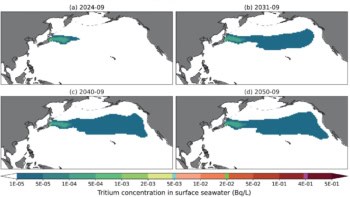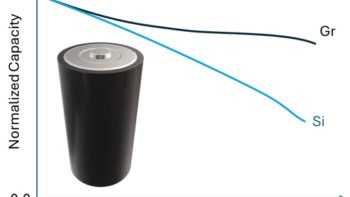
Freak waves towering as much as 30 m above the surrounding seas have long been reported by mariners, and recent satellite studies have shown that they are more common that previously expected. Now, a team of physicists in Germany and the US has gained important insights into the possible origins of such waves by scattering microwaves in the laboratory.
The work suggests that rogue waves can emerge from linear interactions between waves – contradicting some theories, which assume that non-linear interactions are required. The team believes that its insights could be used to calculate a “freak index”, which would give the probability of encountering freak waves at specific locations in the oceans.
The experiment was inspired by a measurement made eight years ago by a group that included one of the present team – Eric Heller of Harvard University. Electrons flowing on a semiconductor sheet were seen to focus into several narrow beams, rather than scatter in random directions as had been expected. The reason, according to Lev Kaplan of Tulane University, is that random impurities in the semiconductor acted like a “bad lens”, directing the electrons (which act like waves) towards several focal points.
Random currents
Kaplan and Heller realized that random currents in the ocean could also act as bad lenses, focusing smaller waves into larger – and even freak – waves.
According to Kaplan, it would be very difficult to test the theory using water in a wave tank because such facilities are set up to study waves propagating in only one direction. Instead, they joined forces with Ruven Höhmann, Ulrich Kuhl and Hans-Jürgen Stöckmann at the University of Marburg to study the effect in microwaves.
The team in Germany injected microwaves into a cavity comprising two parallel metal plates. The distance between the plates was much less than the wavelength of the microwaves, making the waves “quasi 2D” – just like ocean waves. Scattering from random currents was simulated by placing a number of metal cones in random positions in the cavity.
Orders of magnitude more
The team monitored the microwave intensity throughout the cavity and noticed the emergence of “hot spots”, where the intensity was five or more times greater than background levels. The team counted the number of such freak waves that occurred over a finite time and discovered that they were many orders of magnitude more common than if they resulted from the random superposition of plane waves in the cavity. Random superposition had earlier been thought to govern the formation of freak waves in the ocean, which could explain why mariners and oceanographers seemed to differ on the frequency of such events.
Kaplan told physicsworld.com that the randomly-placed cones were behaving like a bad lens, which could occasionally focus the microwaves into a hot spot. The experiment is also the first to establish that freak waves can be generated via simple linear interactions between waves – the microwaves in the cavity only interact linearly. Previously, many oceanographers had believed that non-linear interactions – which become more prevalent in shallow water – were required to create freak waves.
Leonid Mezhov-Deglin of the Institute of Solid-State Physics of the Russian Academy of Sciences said that the microwave experiments should be of interest to physicists studying ocean and other surface waves. However, he cautioned that much more work was needed in the characterization of rogue ocean waves before they could be simulated accurately using microwaves.
Freak index
The experiment has also allowed Kaplan and colleagues to hone their “freak index”, which defines the likelihood of encountering a rogue wave based on the average wave and current speeds and the angular spread of wave motion. This could help mariners to identify regions of the ocean where rogue waves could be a problem, but Kaplan points out that physicists will never be able to predict the formation of individual waves.
A preprint describing the work is available on arXiv.



